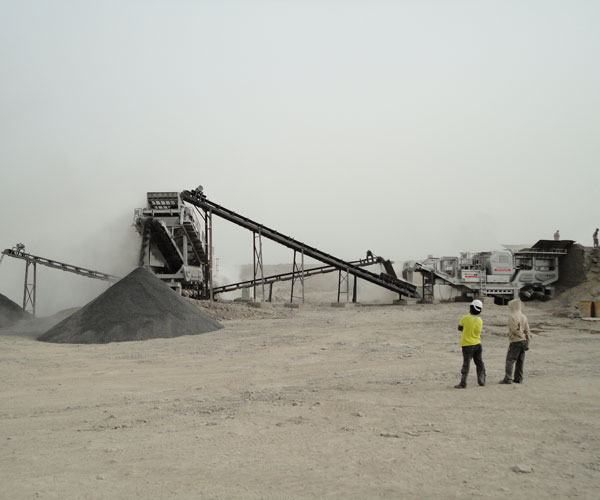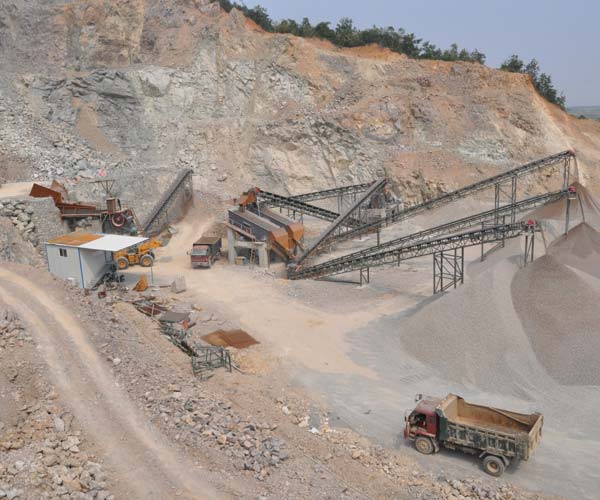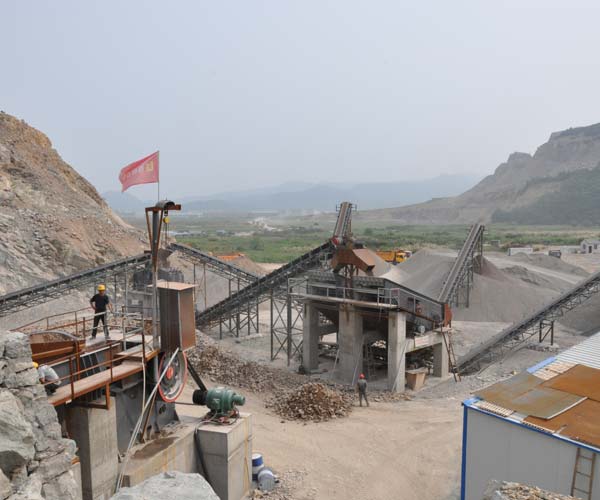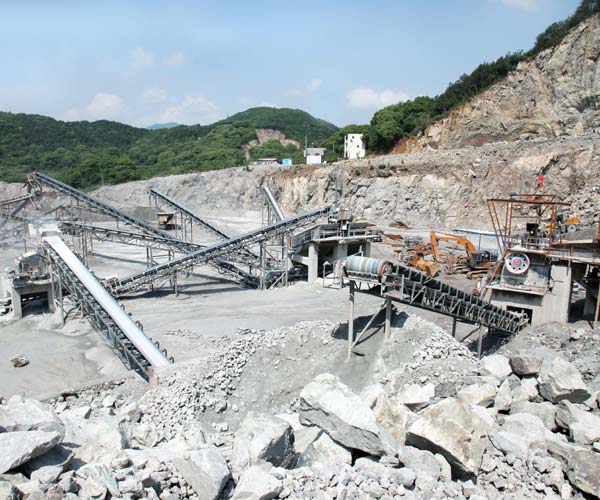
Crushers are essential equipment in quarrying operations, providing the means to efficiently extract and process valuable raw materials. Jaw crushers, impact crushers, cone crushers, gyratory crushers, and VSI crushers each offer unique advantages and are suited to different applications based on the material properties and desired end products.
24 Online Service

Quarry operations are essential in providing the raw materials that fuel the construction and industrial sectors, playing a significant role in shaping modern infrastructure and development.
The primary objective of quarrying is to access and extract valuable raw materials from the earth’s crust. These materials include limestone, granite, sand, gravel, and other types of rock, which serve as fundamental resources for various industries such as construction, road building, agriculture, and manufacturing. Quarrying fulfills the demand for a vast range of materials necessary for the construction of buildings, roads, bridges, and countless other structures that form the backbone of modern society.
Before the actual quarrying process begins, extensive geological surveys and assessments are conducted to identify suitable locations for quarries. Once a potential site is identified, it undergoes detailed exploration to determine the quality, quantity, and characteristics of the desired raw materials.
Once a suitable site is selected, the first step in the physical quarrying process involves clearing the area of any vegetation, debris, and topsoil. This is followed by stripping away overburden, which refers to the layers of soil and rock covering the desired raw material deposit.
After the site is cleared and stripped, the next stage is drilling. Highly skilled technicians use specialized drilling equipment to bore holes into the rock, creating a pattern of blast holes. The blast holes are then loaded with explosives, carefully placed to maximize the efficiency of the blast while ensuring safety.
Controlled blasting is essential to break the rock into manageable sizes without causing excessive damage to the surrounding environment or endangering workers. Proper timing and precision in detonating the explosives enable the rock to fragment into manageable pieces.
Once the rocks are fragmented through blasting, heavy machinery, such as excavators and front-end loaders, is used to load the extracted materials onto trucks for transportation to the processing plant. This stage demands strict adherence to safety measures to protect workers and equipment.
At the processing plant, the extracted rocks are taken through various stages of crushing and screening to produce aggregates of different sizes and shapes. Crushers play a vital role in this process, breaking down the large rocks into smaller, usable aggregates.
Crushers are crucial equipment in quarry operations as they are responsible for reducing the size of large rocks into smaller, more manageable pieces. There are various types of crushers used in quarries, each designed to handle specific rock types and produce different aggregate sizes.
Jaw crushers are commonly used in quarries for primary crushing. They operate by compressing the rock between a fixed jaw and a moving jaw, which causes the rock to break into smaller pieces. Jaw crushers are suitable for a wide range of materials and can handle large rocks with ease.
Impact crushers are versatile machines that can handle a variety of rock types. They work by using high-speed impact forces to crush the rocks, making them ideal for producing aggregates with good shape and size characteristics.
Cone crushers are used for secondary and tertiary crushing. They operate by squeezing the rock between an eccentrically gyrating cone and a stationary outer surface. Cone crushers are efficient for producing fine aggregates and are often used in the final stages of the crushing process.
VSI crushers are specialized machines that produce cubical-shaped aggregates by accelerating rocks in a centrifugal force against a stationary surface. They are particularly effective for producing high-quality manufactured sand.

Modern crushers come equipped with a plethora of innovative features and options that cater to the diverse needs of quarry operators. These advancements have not only revolutionized the way quarries function but also contributed to sustainable and environmentally responsible practices.
One of the most crucial aspects of quarrying is the production of consistent and desired output sizes of aggregates. Modern crushers address this challenge with adjustable settings, enabling operators to customize the final product based on project requirements. These crushers feature advanced technology that allows for easy and precise changes to the crusher’s settings, such as the gap between the impactor or the crusher jaws. By adjusting the settings, operators can obtain various output sizes, ranging from fine sand to larger stone fractions, with exceptional precision.
The ability to produce different output sizes not only increases the versatility of the crusher but also ensures that the quarry can cater to diverse market demands without compromising on the quality of the final product.
Automation has transformed various industries, and the quarrying sector is no exception. Modern crushers boast sophisticated automated controls that optimize efficiency and enhance safety. These automation systems can monitor and adjust crucial operating parameters in real-time, ensuring the crusher operates at its peak performance and maximizes production output.
Automated controls also minimize the risk of human error, reducing the likelihood of accidents and equipment breakdowns. Features such as remote monitoring and diagnostics allow operators to assess crusher performance from a control room, providing a safer working environment.
Mobility is a game-changer in the quarrying industry, where projects often require moving from one location to another. Mobile and tracked crushers have emerged as viable solutions to address this demand. These crushers are mounted on sturdy tracks or wheels, enabling them to be easily transported between job sites without the need for disassembly and reassembly.
Mobile crushers offer unparalleled flexibility, making it possible to set up temporary crushing operations in remote or challenging terrains. This capability not only saves time and money but also ensures a steady supply of aggregates even for projects located far from the main quarry.
Environmental concerns are a critical aspect of quarry operations. The generation of dust during crushing and screening processes poses environmental and health hazards, and adherence to stringent regulations is imperative. To mitigate the impact of dust emissions, modern crushers are equipped with dust suppression systems.
These systems use water or chemical additives to suppress airborne dust, ensuring a cleaner and safer working environment for operators and nearby communities. By controlling dust emissions, quarry operators can not only comply with environmental regulations but also demonstrate their commitment to sustainable and responsible operations.
Sustainable quarrying practices involve optimizing energy consumption to reduce operating costs and minimize the environmental footprint. Modern crushers incorporate various energy-saving technologies to achieve these objectives.
For instance, advanced crushing chambers and high-speed rotating components can improve energy efficiency by reducing the amount of power required to crush the material. Moreover, the integration of electric drives and hybrid power systems allows crushers to operate on electricity, reducing fuel consumption and greenhouse gas emissions.

The selection of the right crusher plays a pivotal role in determining the success of operations. With numerous types of crushers available, making the right choice can significantly impact productivity and profitability.
One Quarry, a large limestone operation, faced challenges with their existing crusher due to frequent breakdowns and unsatisfactory output. The inefficiencies were adversely affecting their production targets, leading to increased downtime and high maintenance costs.
After careful analysis and consultation with experts, the quarry management opted for a modern impact crusher. The chosen crusher featured advanced automation and robust design to handle the abrasive limestone rocks efficiently.
The impact crusher at Thailand Quarry delivered remarkable results. Its higher throughput capacity, reduced downtime, and superior product quality not only improved productivity but also decreased production costs. The automated features allowed real-time monitoring, enabling the quarry to optimize their crusher’s performance and make data-driven decisions for further enhancements.
USA Quarry, an aggregate producer, grappled with challenges related to environmental sustainability and energy efficiency. The existing crushers were consuming excessive power, leading to higher operational costs and a larger carbon footprint.
In an effort to address these challenges, USA Quarry chose a high-efficiency cone crusher with innovative energy-saving technologies. The selected crusher featured variable speed drives and an intelligent control system, optimizing energy consumption based on actual demand.
The decision to invest in the energy-efficient cone crusher paid off significantly for USA Quarry. The reduced energy consumption led to substantial cost savings, and the quarry’s commitment to environmental sustainability was strengthened. Moreover, the cone crusher’s consistent performance ensured a steady supply of high-quality aggregates, enhancing customer satisfaction and fostering long-term relationships.
Before selecting a crusher, conduct a thorough site analysis to understand the type of rock, size distribution, and anticipated production requirements. This information will aid in choosing the most suitable crusher for the specific application.
Different crushers offer unique advantages depending on the application. For instance, jaw crushers are ideal for primary crushing of hard and abrasive materials, while impact crushers excel at secondary and tertiary crushing. Cone crushers, on the other hand, are ideal for producing finely graded materials.
Safety should be the top priority when selecting and operating crushers. Ensure that the chosen crusher is equipped with safety features, such as guards, emergency stops, and warning signs. Proper training for operators and adherence to safety protocols are essential.
Regular maintenance is crucial to ensure optimal crusher performance and longevity. Create a comprehensive maintenance schedule that includes routine inspections, lubrication, and component replacements as needed. Regular maintenance can prevent unexpected breakdowns and extend the life of critical components.
Implement a robust monitoring system to track crusher performance, including throughput, energy consumption, and wear patterns. Real-time data analysis will help in identifying potential issues and making timely adjustments to maximize efficiency.
Modern crushers often come with advanced automation features that streamline operations and optimize performance. Automation can improve efficiency, reduce human errors, and enable remote monitoring, allowing for better decision-making.
Our Projects
Copyright © ZENITH, All Right Reserved.
